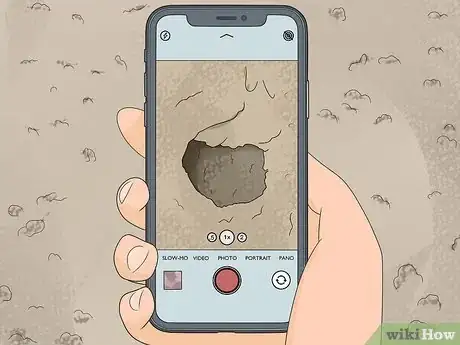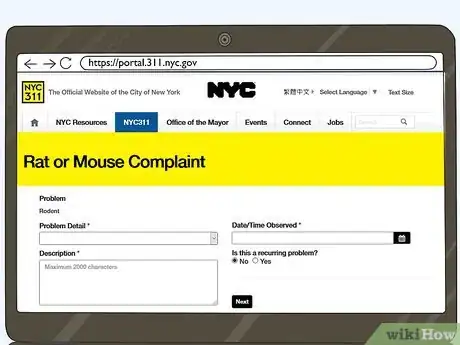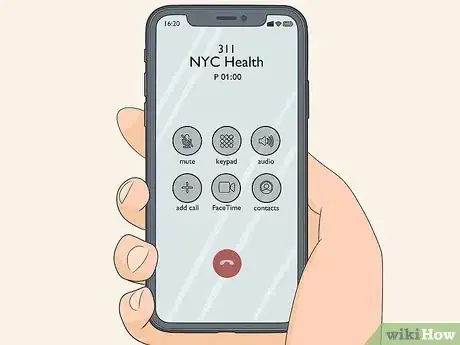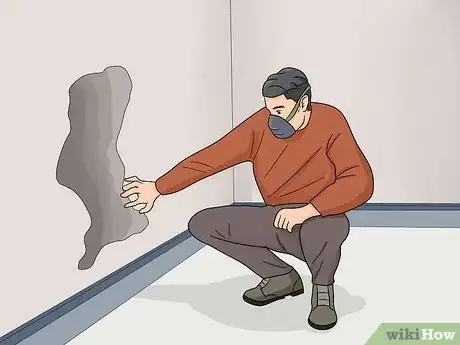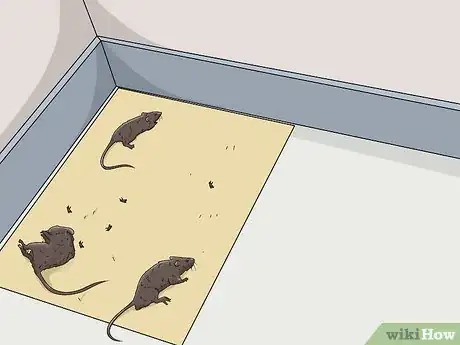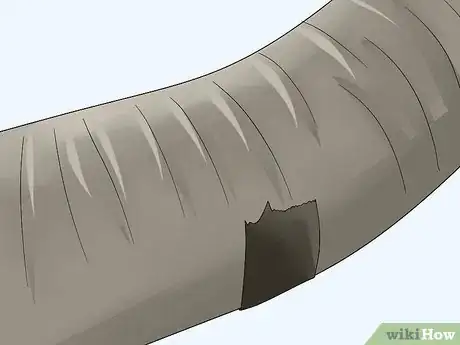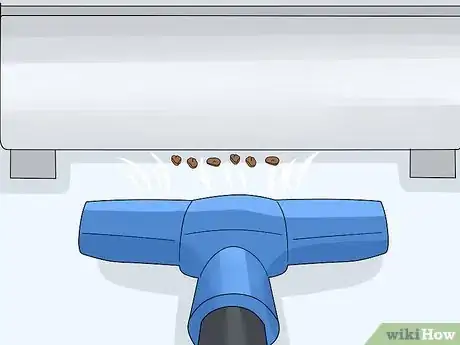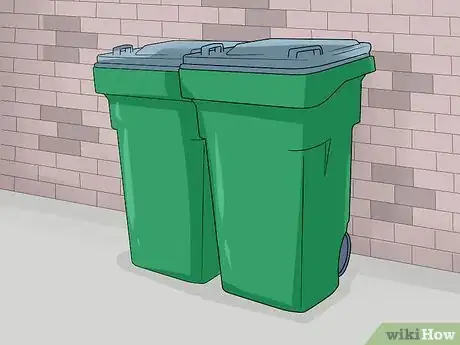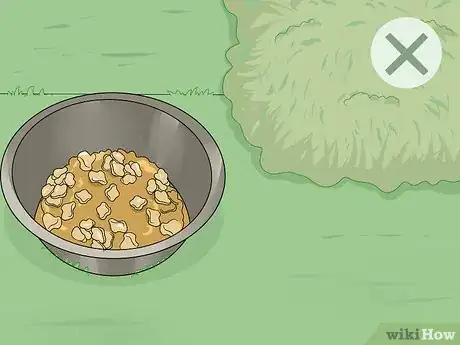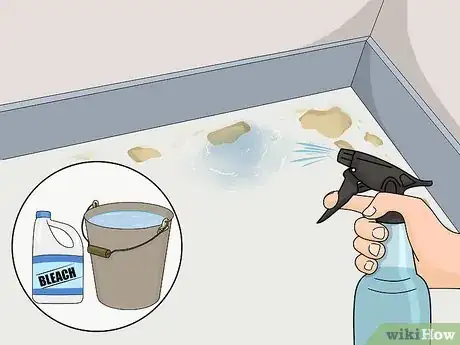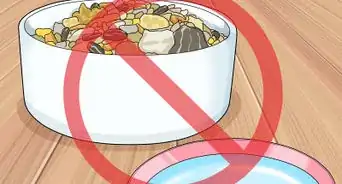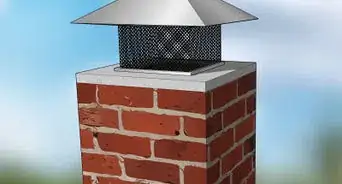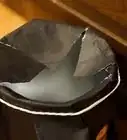This article was written by Chris Parker and by wikiHow staff writer, Jennifer Mueller, JD. Chris Parker is the Founder of Parker Eco Pest Control, a sustainable pest control service in Seattle, Washington. With over seven years of experience, Chris specializes in Integrated Pest Management and doesn’t use any chemicals for pest removal. He offers removal services for ants, rodents, fleas, spiders, wasps, and more. Chris is a certified Commercial Pesticide Applicator in Washington State and received his bachelor’s from the University of Washington.
There are 9 references cited in this article, which can be found at the bottom of the page.
This article has been viewed 14,156 times.
Rats are not just a nuisance — they also spread disease and damage property. Because rats reproduce rapidly, it doesn't take long after the first signs of their presence for an infestation to develop. If you live in the US and become aware of a rat infestation, the quickest thing to do is call the local office of your health department. If you rent your home, you typically also need to notify your landlord. Once the area has been treated and the rats have been removed, take preventative measures to ensure they don't return.[1]
Steps
Filing a Report with the Health Department
-
1Gather information about the infestation. The health department needs to know where you saw signs of a rat infestation and what signs you saw. Since rats are typically more active at night, you'll likely see signs of their presence before you see the rats themselves. Signs to take note of include:[2]
- Nests or holes where rats might be living
- Gnaw marks or scratches on walls, cabinets, or trash cans
- Greasy streaks on walls and floorboards where rats have rubbed
- Moist rat droppings
- Narrow paths rats have worn down
Tip: Take photos of any evidence you find so you can share them with the health department if necessary.
-
2Identify the correct local office to file your complaint. Typically, your state health department takes care of rodent infestations through local offices. If you live in an urban area, you might also be able to call the city's general information line to be dispatched to the correct office.[3]
- Use an online search, such as "report rodents" with the name of your city and state, to find contact information for the local health department office.
Advertisement -
3Submit a report online if possible. Some health departments allow you to report a rat infestation online. This is typically only available in larger metropolitan areas. However, if you have this option available, it can save you some time and effort.[4]
- Include as many details as possible. If you have additional documentation, such as photos, that you can't include in your online report, simply make a note that you have them available if necessary.
-
4Call the appropriate enforcement number. The health department will have a local or toll-free number that you can call to report the infestation. Some areas have several different numbers depending on the location of the infestation.[5]
- For example, if you want to report a rat infestation at a restaurant, there may be a specific branch of the health department that deals with sanitation issues in restaurants.
- The health department's website will have information on how to report a problem. Look for a tab or link on the homepage with the word "contact" or "report."
-
5Find out the results of the inspection. When you report the infestation, a health department inspector will come out to look at the area you identified. Based on their observations, they'll determine how best to remove the rats.[6]
- If the infestation is on private property, you may need to schedule the inspection so you can be there to allow the inspector access to the property.
- If the infestation is on public property, such as in an alley, you may not be able to find out much about the results of the inspection. However, it's still a good idea to follow up with the health department and make sure they're taking action on your report.
-
6Complete any treatment or repairs requested. Depending on the location of the infestation, the health department may take extermination measures or require you to schedule extermination. After extermination, you'll likely have to clean up the area and repair the damage done by the rats so they don't return.[7]
- For example, if the rats are on your private property, the health department inspectors typically will tell you what you need to do to eradicate the rats. They might also schedule follow-up inspections.
- If the rats were located on public property, you may not have to do anything personally.
Informing Your Landlord
-
1Gather evidence of the infestation. If you can show your landlord photos of the infestation or the damage that the rats have done to the property, they'll be more likely to take your complaint seriously. Take photos of any rat droppings you find around the property, as well as any holes or nests you find where the rats may be living.[8]
- Because of the health and safety risk, don't attempt to capture or kill any of the rats yourself. Keep your distance. Keep pets and small children away from rat-infested areas as well.
-
2Complete any removal actions you can. Without incurring too much expense or endangering your health or safety, take what measures you can to at least minimize the problem. Actions you can take on your own as a tenant include:[9]
- Clean up rat droppings and streaks using a mild solution of 1 part bleach to 10 parts water.
- Keep all food in tightly sealed containers.
- Empty trash bins promptly and use secure lids on containers with food waste.
- Seal or cover holes with something metal that rats can't gnaw through.
-
3Write a letter to your landlord about the infestation. As soon as possible after you notice signs of an infestation, draft a formal letter to your landlord and tell them about the problem. List specific signs and when you saw them, then describe any measures you've taken to alleviate or minimize the problem. Give them a deadline of a week to 10 days to inspect the premises and remove the rats. Let them know that you will follow up on or immediately before the deadline if the issue is not resolved.[10]
- When you've finished writing your letter, proofread it carefully before you print it. Sign your letter and make a copy for your records.
- Mail your letter using certified mail with return receipt requested. Keep the card you get back with your copy of the letter as proof that your landlord received it.
Tip: The letter provides proof that your landlord was notified in case you have to go to court. However, it doesn't mean you can't also simply talk to your landlord about the situation, if you're on reasonably good terms with them.
-
4Follow up with your landlord a week after your letter. Give your landlord a week to 10 days to respond to your letter and do something about the rat infestation. If the landlord doesn't take action, write another letter explaining that the problem still hasn't been resolved. Let them know that you will escalate the matter if they don't resolve the problem by a specific deadline.[11]
- Set your deadline a week to 10 days out from the date you send the letter. As with the first letter, mail it using certified mail with return receipt requested so you have proof that they received your letter. Make a copy of the signed letter before you mail it.
- Be specific regarding what you will do if your landlord doesn't eliminate the infestation. For example, you might threaten to contact the health department, report the landlord to a local housing board or other regulatory agency, or withhold rent until the problem is eradicated.
Tip: Talk to an attorney who specializes in landlord/tenant law before you threaten to withhold rent or take self-help measures. These remedies are not available in all areas. Don't threaten something if you are actually unable or unwilling to follow through with your threat.
-
5Contact the health department if your landlord doesn't address the problem. Even as a tenant, you can contact the health department yourself to report a rat infestation in your home or on the landlord's property. If you've given your landlord the opportunity to remove the rats and they haven't responded, call the local office of your state health department and let them know about the problem. They'll take care of it from there.[12]
- If you have a local housing board or tenant's association, you might report the problem to them as well. They can ensure that your landlord does what they need to do to get rid of the rats.
Preventing Rodent Infestation
-
1Seal holes around pipes and heating ducts. Rats can come into your home through any hole that is at least a quarter-inch (about half a centimeter) wide. Cover the opening with a hard, durable material, such as sheet metal, that rats can't gnaw through.[13]
- Use sealant for cracks around doors and windows to ensure rats can't get through.
-
2Clean hidden areas under appliances or cabinets regularly. Rats may nest in dark areas under appliances or cabinets. If you find evidence that rats have been living there, disinfect the area thoroughly.[14]
- Especially in the kitchen, scraps of food often get in these hidden areas. These scraps of food can attract rats and mice.
-
3Keep garbage in strong cans with closed lids. If you keep trash outside, particularly food scraps, use metal or thick plastic cans with lids that will close tightly. You might also consider placing a lock on the lid or chaining it down.[15]
- When you are in a park or other public place, take any trash with you and put it in a trash can rather than throwing it on the ground.[16]
- If you live in a building with a garbage chute, bag your garbage and tie it securely before you throw it down the chute.
Tip: If you dispose of food scraps in a trash bin in your home, take that trash out promptly. Avoid leaving food scraps in an inside trash bin overnight.
-
4Remove any clutter in and around your home. If you have any piles of newspaper, cardboard, boxes, or other such materials, get rid of them. These piles are favored places for rats to shelter and breed. Store any such items off the ground and away from walls.[17] [18]
- If you have a woodpile outside, keep it further away from the house. Rats often take shelter in woodpiles.
-
5Avoid leaving any food outside for pets or other animals. If you feed stray cats or other animals, don't leave the food out overnight. Try to place the food as far away from your home as possible. If your pets are outside during the day, bring their food inside at night.[19]
- If you have a yard or garden, remove any items that could provide them with shelter, as well as potential food sources, including rotten fruit or nuts from trees. This will make it less likely for rats to stay and breed.[20]
-
6Wash away rat droppings and markings with a mild bleach solution. Use a solution of 1 part bleach to 10 parts water to disinfect any areas that have come into contact with rats or their feces. Always wear rubber gloves while disinfecting the area and wash your hands afterward.[21]
- Clean areas around rat paths and walls where they enter as well. Rats use urine and scent glands to leave messages to other rats. If you don't clean and disinfect these markings, more rats might return.
Expert Q&A
-
QuestionWhat do you do if you have a rat infestation?
 Chris ParkerChris Parker is the Founder of Parker Eco Pest Control, a sustainable pest control service in Seattle, Washington. With over seven years of experience, Chris specializes in Integrated Pest Management and doesn’t use any chemicals for pest removal. He offers removal services for ants, rodents, fleas, spiders, wasps, and more. Chris is a certified Commercial Pesticide Applicator in Washington State and received his bachelor’s from the University of Washington.
Chris ParkerChris Parker is the Founder of Parker Eco Pest Control, a sustainable pest control service in Seattle, Washington. With over seven years of experience, Chris specializes in Integrated Pest Management and doesn’t use any chemicals for pest removal. He offers removal services for ants, rodents, fleas, spiders, wasps, and more. Chris is a certified Commercial Pesticide Applicator in Washington State and received his bachelor’s from the University of Washington.
Founder, Parker Eco Pest Control Remove any standing water in your yard so rats don't have a source of water to drink from.
Remove any standing water in your yard so rats don't have a source of water to drink from.
Warnings
- If you spot a rodent at a restaurant, do not eat there and inform the manager.⧼thumbs_response⧽
- This article primarily covers how to report a rat infestation in the US. However, even within the US, different localities may have different procedures. If you live in another country, contact your local health or sanitation department for further guidance.⧼thumbs_response⧽
References
- ↑ https://www1.nyc.gov/site/doh/health/health-topics/rats.page
- ↑ https://www1.nyc.gov/site/doh/health/health-topics/rats-tenants-property-owners.page
- ↑ https://www.sfdph.org/dph/eh/vector/rodentabate.asp
- ↑ https://www.baltimorecountymd.gov/iwant/report.html?categoryId=1010163#/
- ↑ https://www.phila.gov/services/mental-physical-health/report-a-health-or-safety-concern/report-rats/
- ↑ https://www.phila.gov/services/mental-physical-health/report-a-health-or-safety-concern/report-rats/
- ↑ https://www.phila.gov/services/mental-physical-health/report-a-health-or-safety-concern/report-rats/
- ↑ https://www1.nyc.gov/site/doh/health/health-topics/rats-tenants-property-owners.page
- ↑ https://www1.nyc.gov/site/doh/health/health-topics/rats-tenants-property-owners.page
- ↑ https://oregonlawhelp.org/files/CCDACC15-944D-570E-7F1F-7BBF3DEC0018/attachments/786A1709-F2B5-4FAC-80A8-4BB48DD84348/repair-guide-for-tenants-fillable.pdf
- ↑ https://oregonlawhelp.org/files/CCDACC15-944D-570E-7F1F-7BBF3DEC0018/attachments/786A1709-F2B5-4FAC-80A8-4BB48DD84348/repair-guide-for-tenants-fillable.pdf
- ↑ https://www1.nyc.gov/site/doh/health/health-topics/rats-tenants-property-owners.page
- ↑ http://www.publichealth.lacounty.gov/eh/community/rats.htm
- ↑ https://www.boston.gov/departments/inspectional-services/dealing-pests-and-rodents
- ↑ https://www.boston.gov/departments/inspectional-services/dealing-pests-and-rodents
- ↑ https://www1.nyc.gov/site/doh/health/health-topics/rats.page
- ↑ https://www1.nyc.gov/site/doh/health/health-topics/rats-tenants-property-owners.page
- ↑ Chris Parker. Founder, Parker Eco Pest Control. Expert Interview. 18 February 2021.
- ↑ https://www1.nyc.gov/site/doh/health/health-topics/rats-tenants-property-owners.page
- ↑ http://www.publichealth.lacounty.gov/eh/community/rats.htm
- ↑ https://www1.nyc.gov/site/doh/health/health-topics/rats-tenants-property-owners.page
